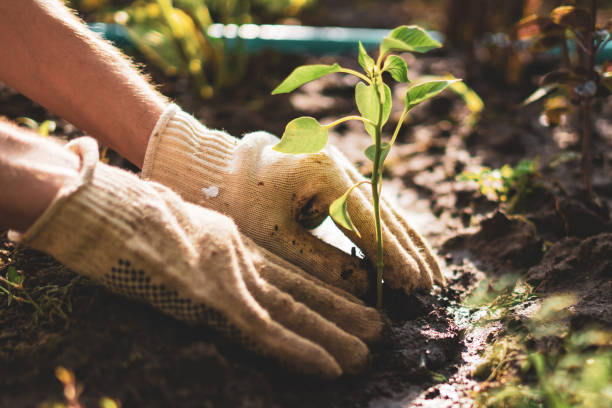Spring gardening in America’s northeast can be a challenge. Keep an eye on what the Old Farmer’s Almanac thinks will happen in the climate over the year. Here we’ll look at ways to prepare for coming summer in America’s northeast based on the month.
Spring Gardening Timeline:
March Tips
For March spring gardening, you’re in a good spot to plant either shrubs or deciduous trees. There are certain herbicidal solutions you can spray before the weeds come–especially for crabgrass.
For fruits and vegetables, when it’s in the 40s Fahrenheit, it’s a good idea to spray fruit trees with dormant spray prior to new growth; such sprays are integral in controlling pests. It’s also a good idea to prune up until the point of budding; just do so when temperatures are above freezing. March is also a fine time to find veggies which can tolerate the cold and plant them.
April Tactics
Spring gardening in April advocates adding compost over dead spots in the lawn and using a bit of grass seed atop that. Pack it in, put straw over the area to protect the seed.
April is a fine month for strawberries, blackberries, and raspberry planting. It’s also a good idea to put in some of those “cold” veggies that can take the frost, if March was too cold. Carrots, kale, Brussels sprouts, and spinach can handle the northeastern climate. If you want to get some “heat loving” plants going, wait until temperatures hit the sixties or higher. Cucumbers, green beans, and corn are in this category.
For perennials, check to see if they’re too crowded and divide things up if that’s the case. If you don’t have any perennials, and April actually has a “Spring” quality to it this year, you might think about planting them during this month. Also, don’t forget to properly water your garden.
May Strategies
For most areas of the northeast, May will be a fine month for spring gardening. You’ll likely be mowing your lawn by now–cut grass down to a third its normal length. Leaving clippings on the lawn can be good to foster growth. For weeds, starting early is best. If weeds are young and small, hand dig them out to get at the root system. Pre-spraying as advocated earlier is also a fine tactic.
For most northeasterly places, May is the time to plant heat-loving plants; it’s unlikely you’ll get a freeze. If you’ve refrained until now, you might as well put in those hot veggies. Now is also the time to plant perennials which bloom in the fall. They need to be divided out once they reach six inches in height. Water sufficiently if rain isn’t abundant with new perennials. Also, keep an eye out for bugs in May.
June Solutions
If you didn’t fertilize prior June, now is the time to do so to keep your lawn looking its best. Now is also the month to add mulch to trees. For fruits and veggies, quit cutting asparagus when yields decrease. If you see basil flowers forming, remove them to get growth that has a more “bushy” quality.
With perennials, you want to pull and compost tulips in June to relieve the soil for autumn. A few flowers that bloom in June include oriental poppies, clematis, foxgloves, coreopsis, Shasta daisies, and delphiniums. If any perennials pass on, get them out of the way for best growth results in your garden.
Spring Gardening Timeline: Get Your Best Garden Year Round
Your spring gardening timeline begins in March, and ends in June – which includes different practices for each month. Consult the Old Farmers Almanac, and carefully watch the weather so you can make the best moves for grass, bushes, trees, perennials, fruits, or vegetables. Lastly: make sure they all get plenty of water.
For all of your garden needs visit Mendham Garden Center. Contact us by phone: 973.543.4178 for Mendham 908.879.5020 for Chester 908.730.9008 for Annandale

